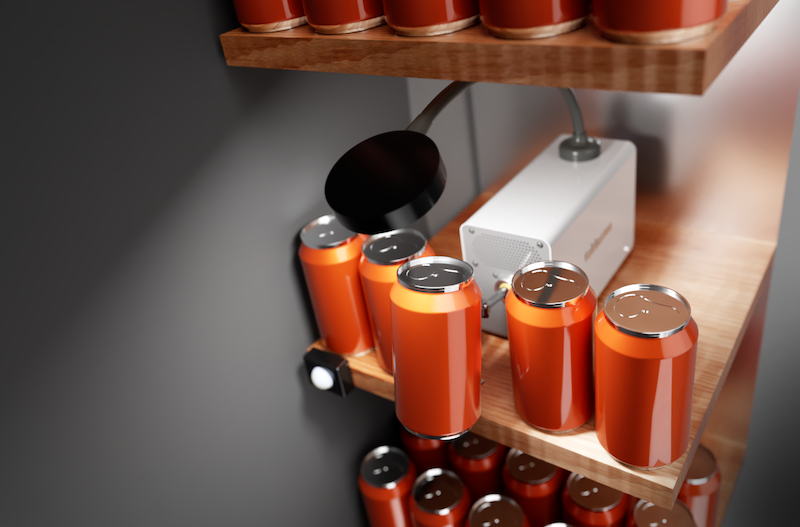
As anyone who makes a living in marketing knows, it is often more valuable to “show rather than tell”. By doing so, you allow the recipient to experience the information you are trying to demonstrate, which packs much more of a punch because it translates to engagement, and then memorable retention.
A marketing strategy that results in a personal experience for every customer is a great way to demonstrate brand awareness and make an impression on potential patrons.
This is coming through in many ways in the marketing sphere in 2021, no matter what the specific strategy may be. In fact, more than two-thirds of companies now compete for business primarily on the basis of customer experience.
One company, Tokinomo, is taking this phenomenon to a whole new level, using motion sensors and animatronics for in-store POSM brand activation displays that make customers smile and boost sales for their brand partners.
Changing an Everyday Experience into a Memorable One
Before the pandemic, going to the grocery store would have probably been described as a blasé, everyday experience. Although it did turn into a battleground for many once Covid-19 hit, it has since digressed back to its monotonous reputation. With grocery shopping being a common occurrence, brands in the supermarket often struggle to set themselves apart from similar products—other than being the more economical option.
Those days are over now that Tokinomo, a brand activation marketing start-up, uses robotic Point Of Sales Materials (POSM) to help consumer goods products literally jump off of the shelf. The name Tokinomo is a proprietary turn of phrase combining the words talking and motion, and their advertisements employ both to construct displays that can increase a product’s chances of attracting customers. This POSM start-up goes far beyond cardboard displays and secondary placements, creating the ultimate shopper engagement solution for the modern-day customer and bolstering both brand awareness and sales.
The founders of Tokinomo started out by working in advertising and marketing, and at one point they were challenged to find a way to increase sales in grocery and convenience stores. Typically, there is no stimulation when you are walking down a store aisle, products just sit on the shelves, collecting dust. But what if you could make them move and tell a story to the shoppers like a scene out of Beauty and the Beast? Surely that would garner some attention.
With motion sensors, mechanical parts with synchronized movements, and harmonized audio messages—this is exactly what Tokinomo does for the average grocery store product.
Creating their own stage, Tokinomo point of sales marketing combines props and the choreography of the robotic measures, to generate a whimsical and creative orchestration unique to each product they promote. Generating sales campaigns that highlight a wide variety of items, the company is able to skyrocket sales, up to 300% during campaigns in as little as two weeks. Although unique to their environment and strategy, what Tokinomo does isn’t completely experimental. In fact, 81% of marketers say that interactive content is more effective than static content when it comes to grabbing consumers’ attention.
Expanding the Limits of In-Store Advertising
There’s a real struggle for products trying to stand out in a grocery store packed to the brim. For example, think about hard seltzers, how many brands can you think of off the top of your head? When the market is saturated, it is hard for brands to truly differentiate from one another, especially in a commonplace setting such as the grocery store. The problem with just having a sale, however, is brand equity decreases when price promotions are employed.
Tokimono gives brands an alternative to sales and price discounts to draw attention, creating a dynamic display that’s specific to the product, giving the marketing reins to brands for customization. This helps businesses to create a meaningful and memorable experience for their customers—which is especially prevalent during annual milestones (celebrations and special holidays) and launching new products. Tokimono’s POSM “brand activation” campaigns range from comedic to artistic—cultivating individual reactions, engaging each passerby.
The goal is to try and simulate experiences where people feel engaged and then are driven to gather their families, tell their friends, or even document their interactions themselves on social media. This creates free advertising for brands, as the customers do their marketing for them. Because as many in marketing know, word of mouth is the best and most credible of campaigns.
Another useful feature for marketers is Tokimono’s ability to change brand messages in real-time from a cloud platform that allows the message and movements to be updated so that the advertisement can evolve with the brand, timing, or audiences. A recent brand activation campaign the company did with international food producer, Maggi, is a perfect example of this. Their “opera singing” soup pot increased sales by a whopping 200% in some stores, according to a press release from the company. Comparing results between the previous two weeks of sales, and the two weeks after the device was implemented, while also comparing the sale of the product between similar stores on the market—the company can accurately gauge how effective their deployed tactics have been.
Transcending beyond the limitations of brick and mortar shopping parameters, stats show that customers are 40% more likely to remember the name of your brand when you implement an in-store advertising campaign with Tokinomo. Maybe it was a no-brainer, but bringing products to life has helped Tokimono engage customers on a more meaningful level, driving unprecedented sales in supermarkets, and bringing some magic into what is otherwise a humdrum shopping experience.
Disclaimer: This article mentions a client of an Espacio portfolio company.




